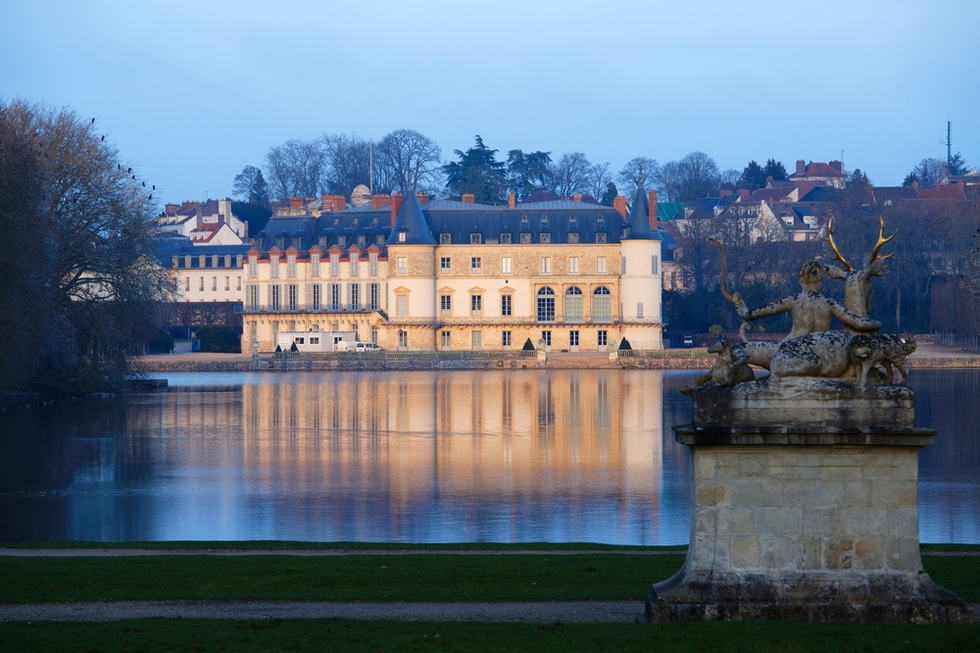Dating from 1375, the château is surrounded by a park in one of the most famous forests in France. Superb woodwork is used throughout, and the walls are adorned with tapestries, many from the era of Louis XV. Before it became a royal residence, the marquise de Rambouillet kept a house here; it's said she taught Paris's cultured ladies and gentlemen how to talk, introducing them to poets and painters. François I, the Chevalier king, died of a fever here in 1547 at age 52. When the château was later occupied by the comte de Toulouse, Rambouillet was often visited by Louis XV, who was amused (in more ways than one) by the comte's high-spirited wife. Louis XVI, eventually acquired the château, but Marie Antoinette found it boring and called it "the toad." In his surprisingly modest boudoir are four panels representing the continents.
In 1814, Napoleon's second wife, Marie-Louise (daughter of Francis II, emperor of Austria), met at Rambouillet with her father, who convinced her to abandon Napoleon and France after her husband's defeats at Moscow and Leipzig. Afterward, she fled to her original home, the royal court in Vienna, with Napoleon's 3-year-old son, François-Charles-Joseph Bonaparte (also known as l'Aiglon -- the Young Eagle -- and, at least in title, the King of Rome). Before his death in Vienna at age 21, his claim on the Napoleonic legacy was rejected by France's enemies, despite the fact that his father had had a special annex to the château at Rambouillet built especially for his use. Before his final exile to the remote island of St. Helena, Napoleon insisted on spending a final night at Rambouillet, where he secluded himself with his meditations and memories.
In 1830, the elderly Charles X, Louis XVI's brother, abdicated the throne at Rambouillet as a mob marched on the château and his troops began to desert him. From Rambouillet, he embarked for a safe but controversial haven in England. Afterward, Rambouillet fell into private hands. At one time it was a fashionable restaurant attracting Parisians by offering gondola rides. Napoleon III returned it to the Crown. In 1897, it was designated a residence for the presidents of the republic. In 1944, Charles de Gaulle lived here briefly before giving the order for what was left of the French army to join the Americans in liberating Paris.
Another fascinating place within the castle grounds (but requiring a separate ticket; 8.50€ adult, 3.50€ children 3 to 12) is the Bergerie Nationale (the national sheepfold; www.bergerie-nationale.educagri.fr), a small farm created by Louis XVI, famed for its rare breed of merino sheep (pure-bred on site since 1786). In addition to the animals, there are horse and cart rides through parts of the forest that are usually out of bounds to the public.
It takes about 2 hours to see the château at Rambouillet.






 About our rating system
About our rating system


